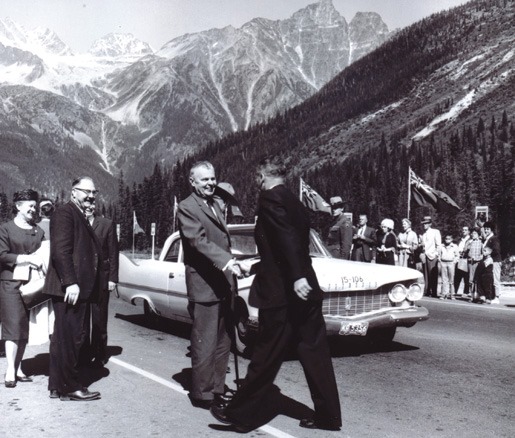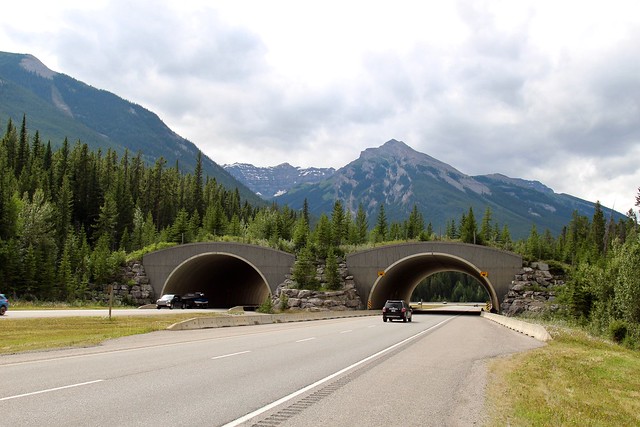8 Fun Facts of the Trans-Canada Highway.
Happy 25th anniversary of the Trans-Canada Highway!!

On July 30th, 1962 then, Prime Minister John F. Diefenbaker officially opened the Trans-Canada Highway. With Diefenbaker “cutting the ribbon” the trans-Canada highway opened for motorists to cruise cross country. At its grand opening, Canada’s Highway 1 was the world’s longest non-interrupted highway. The completion of the Trans-Canada Highway united Canada from coast to coast. In celebration of the cross-continental motorway, drivers marveled with the new knowledge that they could drive (with the aid of ferry’s) from St. Johns Newfoundland to Victoria, British Columbia.
The idea for a roadway that connected the country was first approved in 1949, as post war nation building act. Construction of the great road began in 1950. Prior to the development of the Trans-Canada highway, railway ruled the country.
In Banff’s early days, guests to our region travelled to the mountains by rail car. It wasn’t until 1909, that construction on the “Banff Coach Road” commenced. In the 1950s, Alberta pushed to have its section of the Trans Canada Highways built.
Thanks to the construction and the completion of the Trans-Canada highway, millions from around the world have been able to enjoy the beauty of the Canadian Rockies, and the wild of our interrupted nature. For Banff, the highway unites us with the rest of the country and the world.

8 Fun Facts of the Trans-Canada Highway
1. The Trans-Canada highway is 7,821 km (4,860 miles) long.
2. The highest point on the Trans-Canada Highway is the mile-high Kicking Horse Pass at 1627 m (5338 ft.) above sea level.
3. The most challenging sections of the highway to build were through the Alberta and British Columbia Mountain ranges, and the swaps of Ontario.
4. While the highway links the nation, provinces are responsible for their sections of the highway. (The federal government is only responsible for sections of the highway the run through national parks).
5. For sections of the highway to qualify as the “Trans-Canada” the paved road must be at least 6.7 meters wide and have shoulders of 3.3 meters on either side.
6. In Banff National Park there are 38 wildlife underpasses and 6 wildlife overpasses.
7. The portion of the highway from Calgary to Banff is said to be one of the world’s most beautiful drive.
8. In 1981, the twinning of the Trans-Canada Highway through Banff National Park commenced. The project was completed in 2014.
